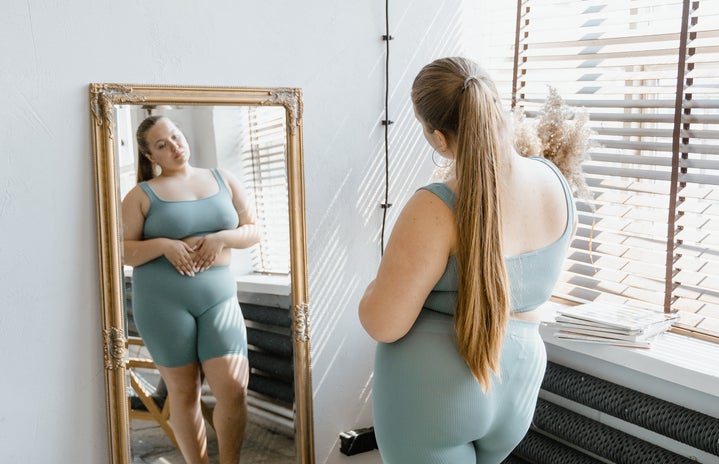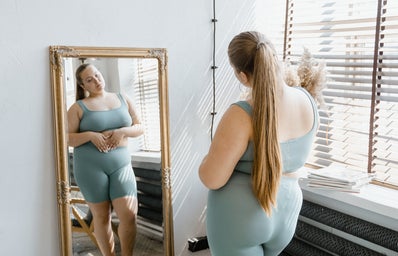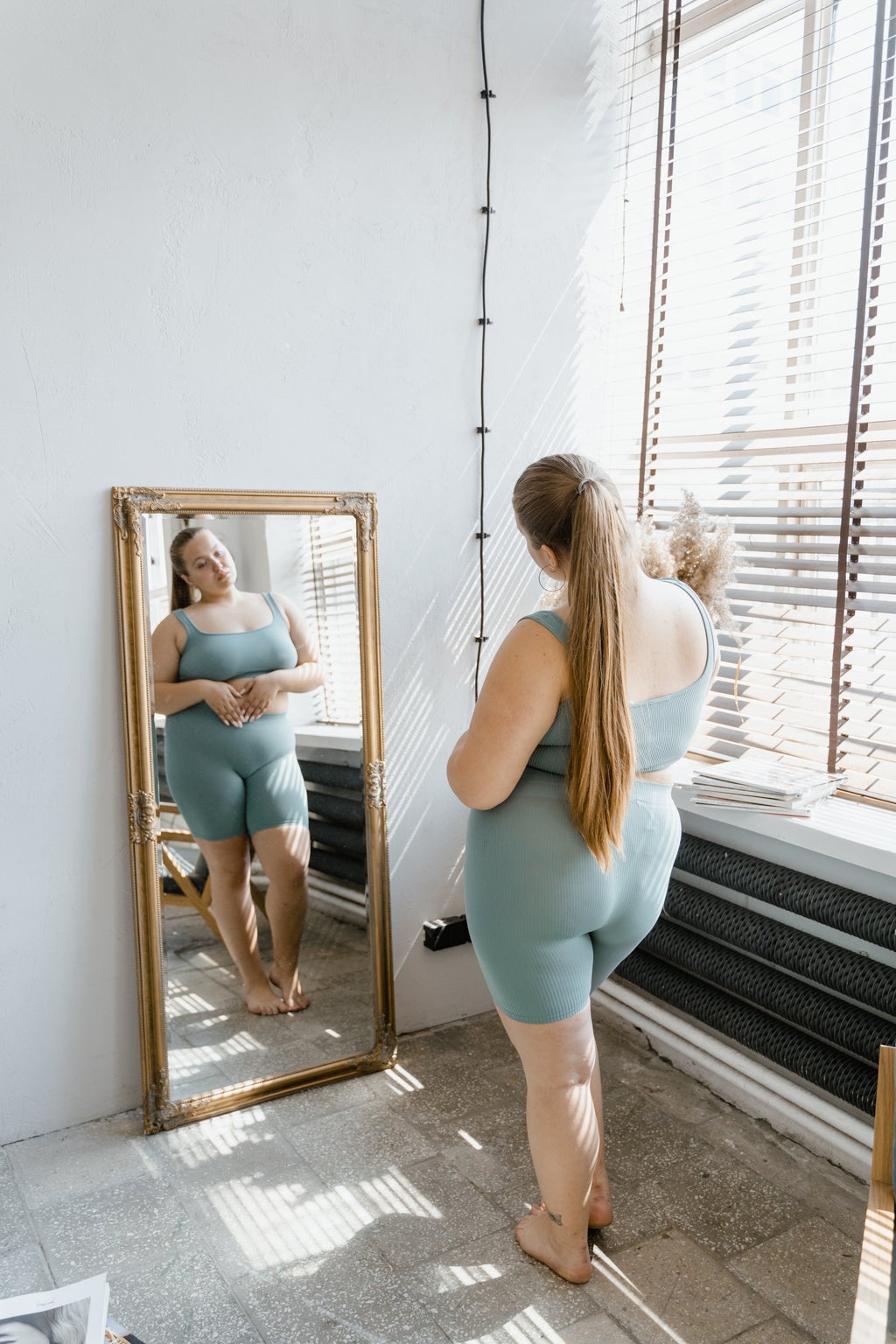Whenever kids ask teachers to provide reasoning behind the history taught in classrooms, teachers often reply with, “To prevent the past from repeating itself.” Few kids believe this and, instead, dramatize it as being another way that school is trying to punish the children of society. However, everyone has that one striking incident that makes them see how elements of history resurface even if in different ways. For me, I first noticed the constant resurfacing of women’s body ideals and continue to notice this as my age increases. History will repeat itself unless we become aware of the past. Just so, body trends and the toxicity brought on by the media cannot be stopped unless we become aware of them.
A Brief History of Women’s Body Trends
To better understand how body trends and ideals can sneakily worm their way into the lives of multitudinous women, we must look at how the “ideal” body has developed throughout history. Diving into the decade-by-decade breakdown of a woman’s “ideal” body shows that body trends change about every 7-10 years. Prehistory-1900, according to CNN reporter Jaqueline Howard, saw the image of a woman’s body change from being round and pear-shaped to sporting small breasts with an elongated torso to being curvy and voluptuous to being “cone” shaped. It wasn’t until the beginning of the 20th century that the desire for a skinny, athletic woman’s body arose. This shift in desires, though, was what changed the game for the type of focus that was placed on a woman’s body.
Moving into the 20th century, the rise of eating disorders in women became the way in which women attempted to fit into the slim physique portrayed by 1920s flappers and women on popular magazines. While this rise was combatted in the two decades following, it quickly rose to its previous popularity towards the end of the 50s and into the 60s. The 60s and 70s shifted the focus for women to attain a thin body through corsets and body maneuvering devices towards attaining this ideal by being naturally young and thin. For this reason, the 60s were another time of extreme eating disorder, diet, and exercise issues for women. Women no longer depended on garments, like corsets and shapewear, as much. Instead, they took to physically training their body to maintain its most “ideal” form. When young people wonder where their grandmothers’ disordered views of food originate, this phenomenon can be provided as an answer. This disordered view thus bled into the generation of our mothers, too.
In addition to being influenced by their mothers’ toxic view of food and their body, our mothers experienced the whiplash of going from the 80s body ideal, which focused on a thin body but in a more fit and healthy way, to the 90s body ideal when the shift went back to an extremely thin body. This shift is one that left a lasting impact on our mothers and thus bled into our generation, too. Luckily, as the 2010’s approached, a shift towards diversity and inclusion in bodies instead of the lack of acceptance that dominated the early 2000s became apparent. These first steps towards what has become known as the body-positivity movement hold immense impact and symbolism in the body ideals conversation. As with all things though, there is a catch that may come and mess up the flow. This catch was COVID-19.
The Impact COVID Has Had on the Ideal Body
COVID brought an influx of changes to society, one of which being the growth of social media use. Social media pre-COVID still had the possibility to leave lasting negative mental health impacts on users. However, social media use and the level with which people struggle with poor self-image have shown a positive correlation. Since social media use increased during the time of COVID, people’s negative perceptions of themselves increased, too. This thereby put a dent in the already fragile movement toward the acceptance of all bodies.
Not only is the fact that the use of social media can leave lasting impacts part of the reason COVID shifted the view of bodies This shift also comes from the type of content that grew in popularity during COVID. Terms such as the “quarantine fifteen” began being thrown around as something else for people to “be aware” of during this already stressful time. Everyday people had already started posting more about their lives online to feel some sort of deeper connection with those they no longer saw every day. These people then took to posting their workout and eating routines to build a community of support for general health and wellness during the pandemic. Social media and the competition it brings took what could have been a positive support outlet for people and twisted it into something toxic, though.
People were posting their daily routines to help themselves regulate their emotions during the scary time that was COVID. However, these innocent posts were soon attacked by fitness influencers for not being “legit”. Before the online world knew it, fitness influencers with little to no credentials were pushing their toxic views of the gym and nutrition onto people who just wanted to be healthy. These people took to the new routines being pushed onto them and grew their own illegitimate platforms pushing toxicity onto more people. Furthermore, the conditions of COVID allowed people to have more time to spend at the gym and prepping the “right” food. Everyone became obsessed with lifting and getting shredded to fill their time. Strong women and “muscle mommies” became the “it” body type. Cardio queens, pilates girlies, and yoga masters were all put on the back burner for participating in “ineffective” types of workouts that did not yield the most socially acceptable results. I’m all for strong women and building muscle. However, one type of fitness routine is not meant for everyone in the same way that one type of muscular body may not be meant for everyone.
Proof that Body “Trends” Do Exist and Resurface
The socially acceptable “gymfluencer” and “fit” version of a woman’s body has been the newest trend to emerge from the increase in social media use since COVID. While this grew from a place of genuine desire for health and fitness, it has become the personality of so many women out of fear that they must prove something with their bodies. This desire to “prove” something with the appearance of one’s body is the common denominator that drives all body trends. It is what allowed fitness influencers to push a new body ideal to be adopted into an emotionally and socially vulnerable society.
I would say that the first and only body trend I have seen both rise and fall has been this more muscular, curve-building, and lean body that blew up during the pandemic. Granted, I have lived through other social body trends, but this has been the first time I have been fully cognizant of what was going on in the media in relation to a body type. Until recently, I never had seen the desired body type shift and wondered if it was a real phenomenon, or just something that had faded out over time. To be honest, I wished the latter were true and society was simply moving towards supporting strong and healthy women, no matter what genuine health looked like. Wishful thinking, I know.
My eyes have been opened in the weeks since Monday, February 5th when the 2024 Grammy’s Awards show saw Miley Cyrus’ arms. This night marks the U-turn that has begun to steer women away from heavy weight training their muscles, specifically muscles in their upper bodies. Miley Cyrus walked onto stage that night and gave the performance of the lifetime. Not only did she perform well, but she looked amazing doing it. Her fashion, hair, and makeup choices, however, were not what was focused on by the press. Instead, Miley received exponential questions about the arm workout that gave her toned but slim arms. Miley told the press that pilates was her secret to these arms.
Since the interviews with Miley, more and more influencers have taken to posting workouts that are claimed to automatically attain these toned, slim arms. Some women who have built up their upper body strength have even stopped training upper body altogether in an effort to shrink their arms down to the newly deemed ‘acceptable” arms for women. The fact that the media has this much power over people’s perception of a “good” body is nothing new, but it is something I have not fully seen in practice. What common people who are trying to follow these new “Miley Cyrus” arms workouts don’t know is that many of the people posting these workouts have little to no credentials. They just want to capitalize off of women’s insecurities and know they can go viral by subjecting women to judgement and shame.
So How Do Women Keep a Healthy Mindset?
What women need to know is that much of what plays into everyone’s most healthy version of themselves is genetics. Specific workouts alone cannot make one look like Miley Cyrus. Specific workouts combined with nutrition may get one closer to a “toned” look, but that “toned” look will still look different than any other celebrity, online personality, or fitness influencer. In fact, it should. No one should be striving to emulate one specific person’s body because it places the natural human body on a pedestal that it has not earned. What should be placed on a pedestal? The personality, kindness, love, intelligence, creativity, perseverance, effort, and empathy a woman exhibits. Putting these internal characteristics on a pedestal in place of the temporary, external characteristics will lead to a greater number of women pursing general health and fitness for the correct reasons of life longevity, quality, and mental health management. Educating ourselves on how body trends have repeated themselves is the only way to ensure that trends do not continue to repeat and hurt more women in the process. Being aware is, ultimately, key to shifting mindset and mindset has everything to do with growing a garden of self-confidence for all women.






